The architecture of the Nicanor Parra Library in Santiago

The library, designed by Mathias Klotz, resides on a narrow street in the older part of Santiago, a neighborhood of Beaux Arts and neoclassical buildings that have been repurposed by universities. (Carolina A. Miranda / Los Angeles Times)
A design by Mathias Klotz in Santiago, Chile employs simple materials — wood, glass and concrete — in sophisticated ways.

A slowly ascending ramp leads to this interior atrium lined with a geometric arrangement of concrete planters and a screen made from wood (which can be glimpsed at right). (Carolina A. Miranda / Los Angeles Times)

The screen creates an effect of lights raining down from the sky, yet its material couldn’t be simpler: unfinished wood that has been stained black. (Carolina A. Miranda / Los Angeles Times)

The concrete planters give the atrium a pattern but also contain a bit of greenery -- a nice touch in smoggy, urban Santiago. (Carolina A. Miranda / Los Angeles Times)
Advertisement
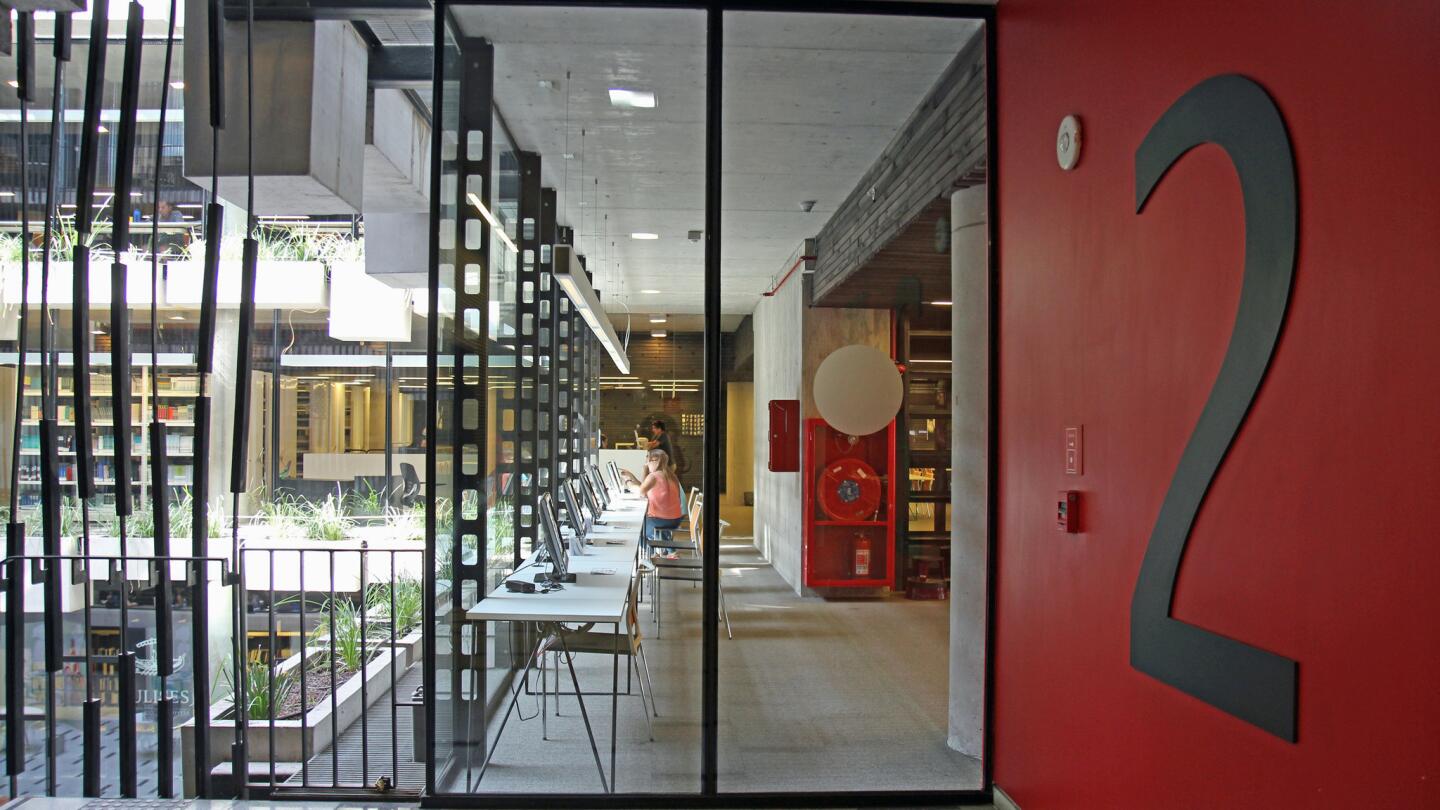
On each floor, bold strips of red provide a break from all the black and gray. (Carolina A. Miranda / Los Angeles Times)
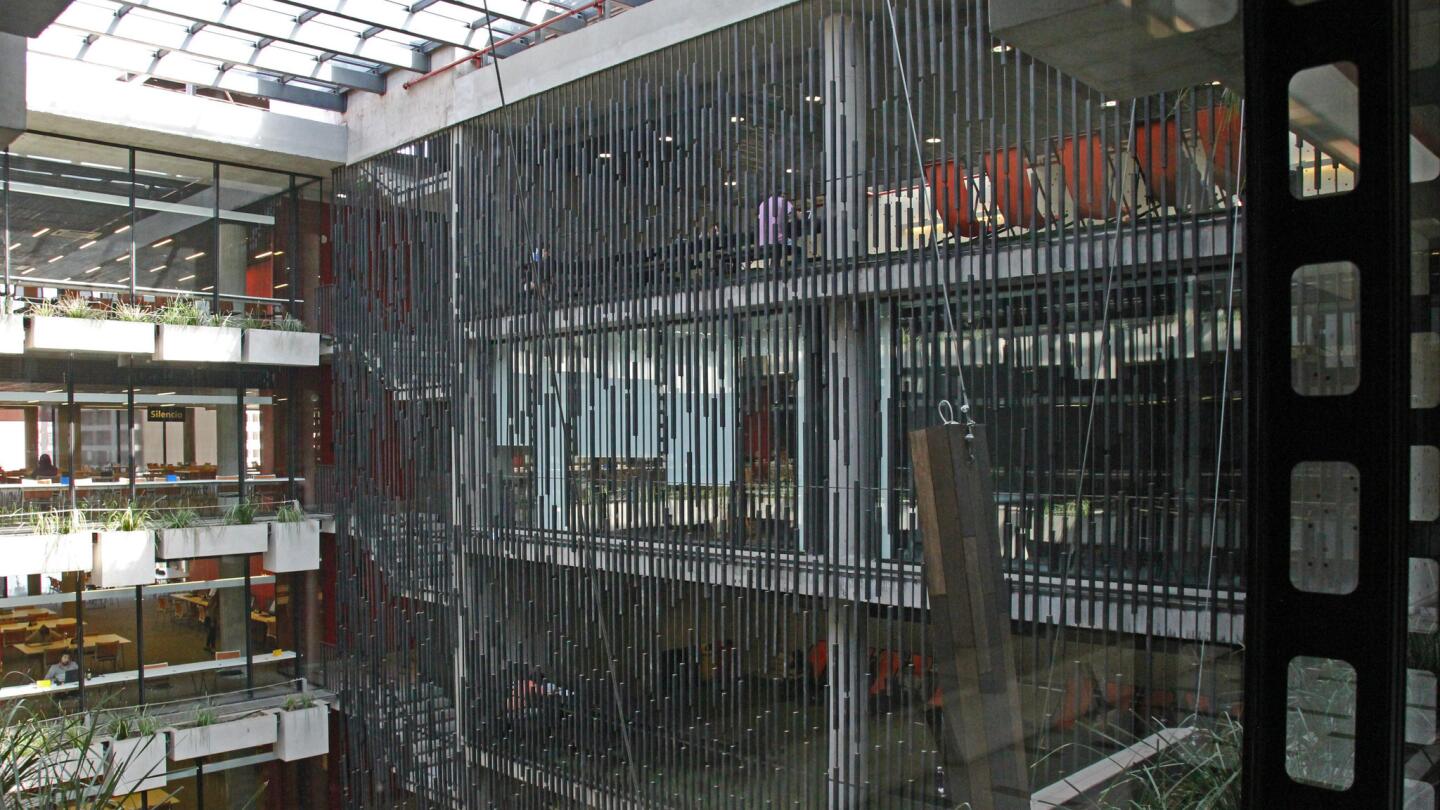
Behind the wooden screen resides a series of informal lounges, where students can read, gather for meetings or simply check email and hang out. (Carolina A. Miranda / Los Angeles Times)
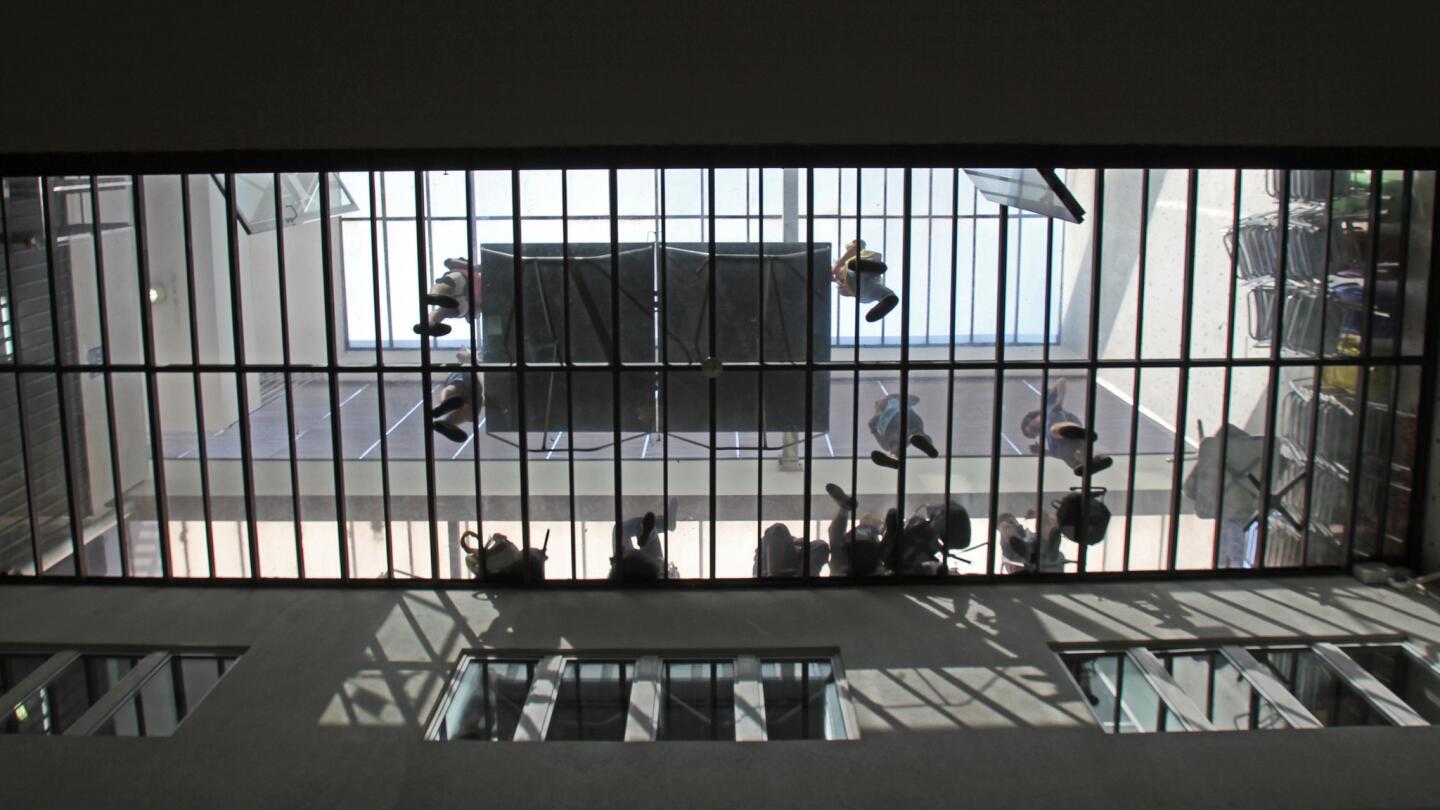
To give the building transparency, the architect added patches of clear glass on each floor. A nice idea as far as the circulation of light goes -- not so hot if you happen to be the part of humanity that wears skirts. This view looks up toward the rooftop cafe. (Carolina A. Miranda / Los Angeles Times)
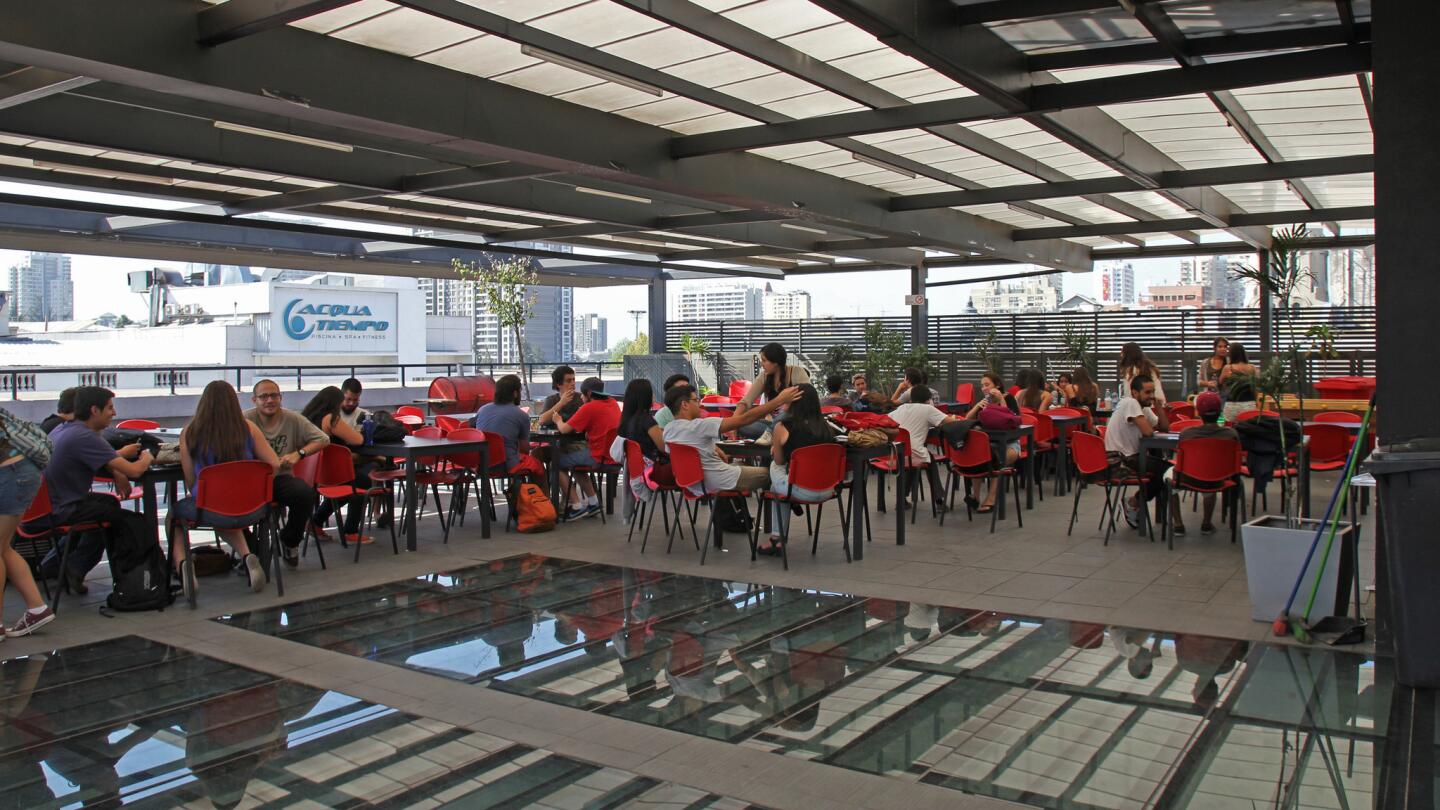
No Chilean building is complete without a cafe. This one has two: one in the lobby and another on the roof, with views of Santiago. (Carolina A. Miranda / Los Angeles Times)
Advertisement
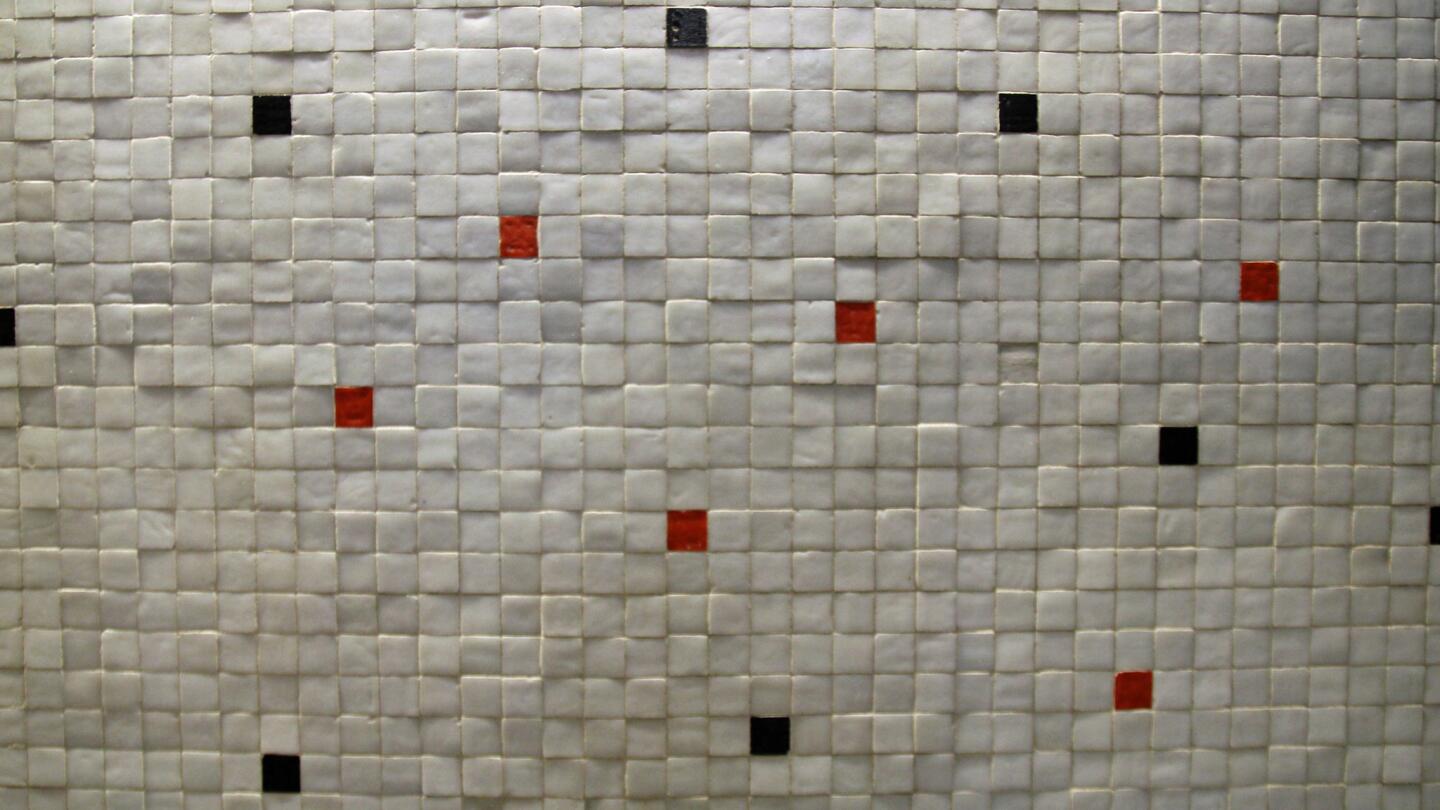
A mosaic tile wall that wraps an interior stairwell bears small splashes of color. (Carolina A. Miranda / Los Angeles Times)

The building is a play on lines -- that of the planters, the books and the Morse code-style pattern on the floor. (Carolina A. Miranda / Los Angeles Times)



